Show Me the Money
| Customer surveys show that one of the first things people want to know about a product or service is the price. The product picture or description might pique one's interest, but pricing information is foremost in people's minds. Be candid: Make it easy for users to get pricing information.
At a time when Internet scams are prevalent, customers need extra assurance that organizations are credible before they'll commit to a sale. Being straightforward and clear about price is essential to garnering business. A price can tell people a few things at once:
When no price is shown, people assumeoften wronglythat the product must be expensive. Showing the price at the first mention of the product helps alleviate customer doubts about whether they are in the right price category. Price is also a key component in product comparison. Once people identify potential candidates for purchase, pricing is critical in making trade-off decisions. Why are these two similar-looking products priced differently? Is this additional feature worth paying the extra cost?
Price can also guide buyers to the right place for their needs. For example, if a person is shopping for copiers for a com-pany of 500 employees, he or she expects the price to be significantly different than the price for a machine designed for small businesses. Bigger companies need beefier machines, which means higher price tags. Conversely, if the user is buying for a small business with only a few users, the price category will be much lower. Knowing the price at the beginning helps buyers quickly hone in on the items that are relevant to their situation while weeding out the rest. At a time when Internet scams are prevalent, customers need extra assurance that organizations are credible before they'll commit to a sale. Being straightforward and clear about price is essential in garnering business. People view companies that hide costs as evasive and untrustworthy. Imagine going into a flooring store and asking for the price of installing tile, but the sales associate says he can't tell you until after you hand over your credit card. Now imagine a store where the sales associate not only tells you the final cost, but also breaks it down by materials and service. Which company are you more inclined to do business with? People in our study were initially drawn by the graphical presentation of this resort and immediately wanted to know about prices, but there was no obvious place to get them. The accommodation area had a small link called Seasonal Rates, but people didn't notice it because it was grouped together with links for the Towers. "Looks pretty good to me, but how much is it going to cost me?" "It doesn't say how much it costs. This is disappointing because I don't have a definitive answer. I don't know how much it costs and how to make a reservation." 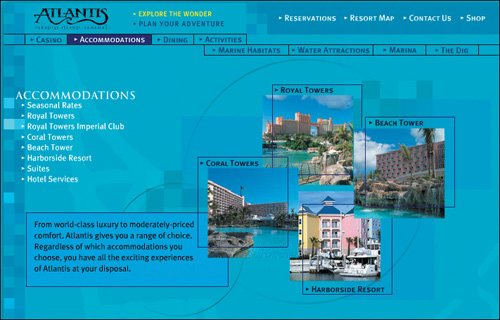 www.atlantis.com (Facing page, top) Shopping on this site is unpleasant because customers must click on each item to see its price. Show prices at the category page level, not just on the deeper-level product pages. "I don't like that they don't have prices, so you don't have a clue of what they are going to be." 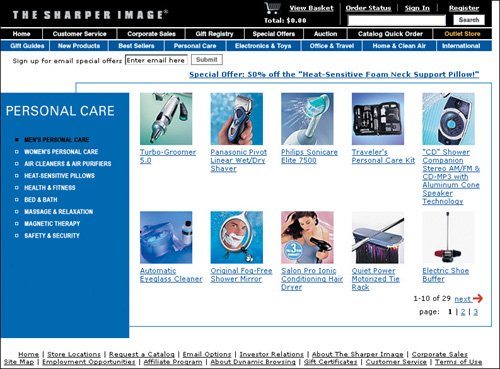 www.sharperimage.com (Facing page, bottom) This site leaves out prices altogether. Even if prices vary from store to store, showing estimated prices is better than nothing. Price can indicate product sophistication: For example, brand-name and designer apparel tends to be priced higher. People who are unfamiliar with this brand will wonder whether the price falls within their budget and their fashion sensibilities. 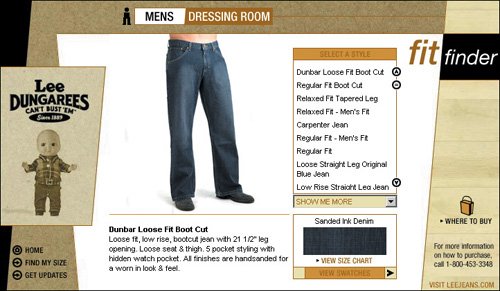 www.leefit.com No ExcusesCompanies make many excuses for why they don't reveal prices online: They don't want competitors to know their prices, prices vary for different customers, prices fluctuate, and so on. All of these excuses may be legitimate, but they don't help your customers. Not showing price works against their needs and creates a hostile shopping experience. Don't play tricks on customers when it comes to cost. Repeat online transactions rely on consumer confidence, and companies that uphold their advertised claims win points with customers. This site does a good job of revealing vendor prices for its products. Even though governmental organizations have their own purchase programs, seeing the cost gives them an idea of the price range. 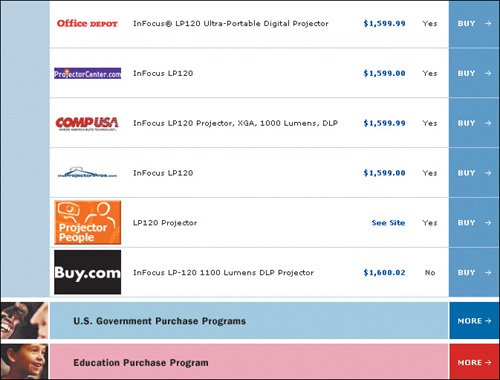 www.infocus.com 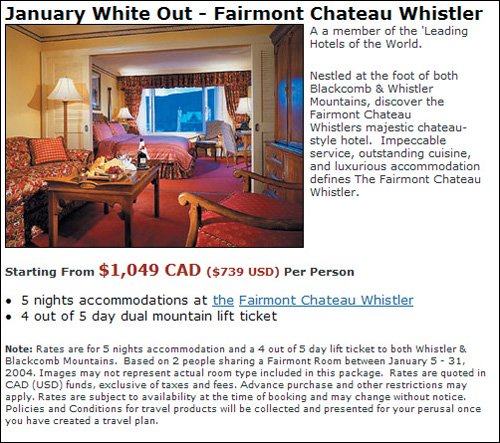 People were initially attracted to the advertised price of the January White Out package on the Fairmont Chateau Whistler ski resort site. When they followed the link, however, the price changed from $1,049 (Canadian) for five nights to $529 per night. The seemingly inconsistent pricing information hurts an organization's credibility. 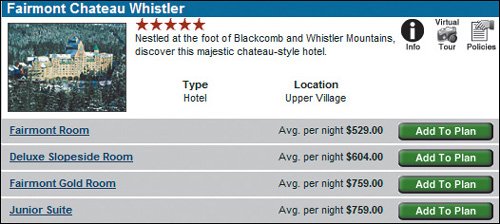 www.whistlerblackcomb.com
Disclose Extra FeesDisclose additional fees such as taxes and shipping as soon as possible, and certainly on the first page of the shopping cart. Don't expect people to wait until the end of the checkout process to get the bottom line. Most people won't waste their time filling out forms or giving personal information unless they know what they're spending, and an unexpected surcharge is an unwelcome surprise. For example, a user in our study who was shopping for a vase on KitchenEtc.com was apprehensive about purchasing the item because the shipping and insurance costs weren't apparent. She was an experienced Internet shopper and didn't want to be fooled by hidden costs. Without the total cost, she didn't want to shop on this site. "There wasn't any mention of shipping," she said. "Typically glassware requires insurance and is heavy; shipping can be expensive. I doubt that I would go back to this Web site.... It doesn't say how much the shipping is, so that is a concern." By the same token, if you offer free or discounted shipping, say so. Let customers know whether taxes apply. Legitimately saving people money is not something to be shy about. Saving customers money on supplementary charges can swing them favorably in your direction. Customers on this site don't get the final total until they've registered and entered complete shipping information. Placing such obstacles in customers' path turns them away. 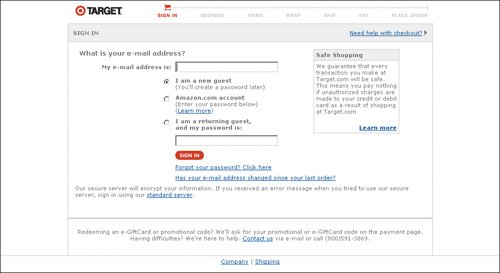 www.target.com This site advertises its one-dollar shipping fee prominently on the homepage, so there's no ambiguity, leaving customers free to focus on shopping. 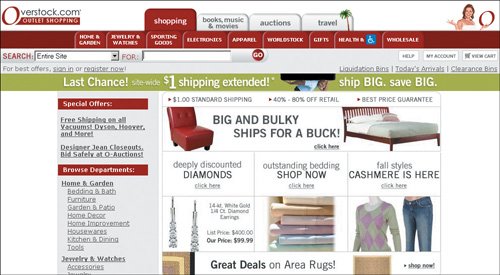 www.overstock.com If you have complimentary items, make sure that's cleareven for items that are customarily free. Many companies give away catalogs on their Web site and neglect to indicate that they're complimentary. A participant in our study refused to sign up for a catalog because it didn't mention price, so she assumed there might be a cost. 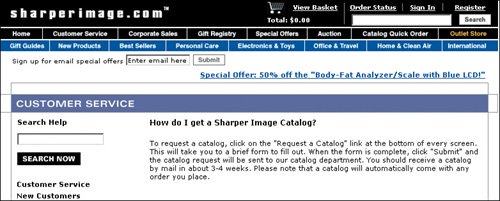 www.sharperimage.com This site shows the estimated shipping price on the shopping cart page, before requiring any personal information. Saving people from unnecessary steps before they've made the commitment to buy is a smart strategy that facilitates a pleasant shopping experience. Of course, the exact final cost should be shown before people check out, preferably right after the shipping address is entered. 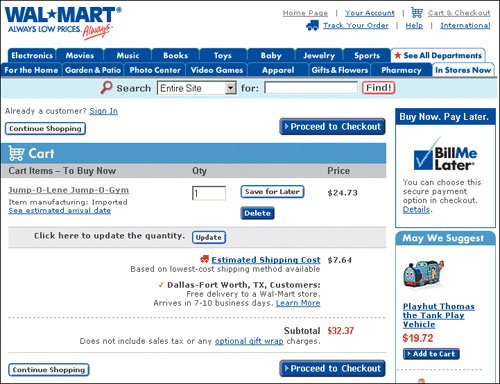 www.walmart.com |
EAN: 2147483647
Pages: 107